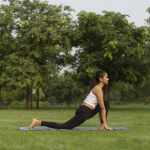Fortunately, people recognize the importance of health and fitness in this modern world. Adults are switching to a nutritional diet to escape health problems and lose weight. In contrast, teenagers and young adults are delving into physical fitness. Surprisingly, building muscle strength and losing fat requires a mixture of a healthy diet and a properly structured workout routine. You might replace burgers with green vegetables and meat but starting a workout routine seems a bit challenging.
Enrolling yourself in a workout program with a reputable trainer might seem an easy way out, but it won’t cater to you individually. Every trainer follows a generic workout procedure without considering individual differences and endurance capacities. Surprisingly, with some know-how and understanding, you can start your workout routine. Learn about the principles of balancing factors – exercise selection, frequency, volume, and understand your physical performance.
Whether you want to lose some pounds, improve aesthetic appeal, or build muscle strength – determine your goals. It will help you make an effective workout plan that delivers results. If you are new to the fitness world, let us help you on this journey. Here we are revealing a step by step guide on how to build an effective workout routine.
Table of Contents
STEP 1: GATHER RESOURCES FOR YOUR WORKOUT ROUTINE
From dumbbells, equipment, yoga mats, shoes to exercise gear – starting a workout routine needs more than a plan. You have to get all the necessary things beforehand to avoid any interruptions during the workout. Firstly, invest in light-weight shoes to maintain a firm grip and sweat-resistant clothes to let air reach the skin. Similarly, cash in on essential equipment, such as a resistance band, climbing machine, workout bench, etc.
If you don’t have ample space, consider getting a vertical workout machine instead of a traditional stationary bicycle or treadmill. In addition to its compact size, it offers a full-body workout with high-intensity training, giving you a unique cardio experience. Once all tools and resources are available, start planning your training schedule.
STEP 2: SET TRAINING FREQUENCY
How often should you work out? What muscle groups need training? These things boil down to personal preferences and training goals. After all, it is up to you and how much time and days you can spare for a workout. Likewise, the training of muscle groups depends on how your body responds to it. If you encounter severe body pains by working six days a week, consider reducing the training frequency. You can have a workout session three days a week while increasing the time frame. Unsurprisingly, there is no hard and fast rule for setting training frequency. Understand your endurance level, muscle strength, stamina, and set a frequency that doesn’t exhaust the body.
STEP 3: DECIDE TRAINING SPLIT
Next up, you have to customize your workout schedule as per your training preferences and fitness goals. If you are a full-time worker who works behind the computer screen all-day, opt for mobility training in your workout routine. Since you don’t engage in physical activity, it leaves your muscles at the risk of impairment. Mobility exercises and stretches develop bone density while moving joints through their full motion range.
Otherwise, if you want to build muscle strength or burn fat, combine cardio with strength training. It will strengthen your muscles and simultaneously eliminate fat from your lower body. Remember, training split would always be different for every person.
STEP 4: DETERMINE INTENSITY LEVELS
Have you heard of consistency over intensity? In the fitness world, this holds great importance. Usually, people looking forward to a weight-loss journey end up following a hard-core workout routine. Alongside failing to provide results, it leads to chronic injuries and back pains. Therefore, you have to determine the intensity levels before calling the shots. Begin with basic exercises – squats, lunges, jumping jacks, pushups, etc. to help your body adjust to the new fitness levels.
After a few months, you can increase the reps, speed of competition, and exercise volume. If you were doing two sets of 20 mountain climbers, start doing four sets. Likewise, feel free to weigh in your exercise as you make progress. But most importantly, listen to your body. If you don’t see any recovery from pains, scale down the intensity in the next workout.
STEP 5: SWITCH EXERCISES
Undoubtedly, regular workout schedules are quite exhausting, but they don’t have to be boring. Instead of repeating the same exercises in the same pattern every day, bring variations in your workout. If you exercise four days a week, divide the full-body workout into the upper and lower body. It will let you switch between biceps, squats, lunges, and pushups. Moreover, you can devote one day to compound exercises. They train many muscles at once, promote weightlifting, and builds potential for weight potential.
WRAPPING UP YOUR WORKOUT ROUTINE
Believe it or not, designing a workout routine in your capacity is the most acceptable way to begin the fitness journey. In the beginning, workouts might be overwhelming and exhausting, but don’t let this stop you. Prepare a workout plan and ensure consistency by keeping a regular weekly training schedule. You can use a variety of exercises and machines to test multiple muscles and build strength. Once you start seeing the results and improving health conditions, all your efforts will seem meaningful.







